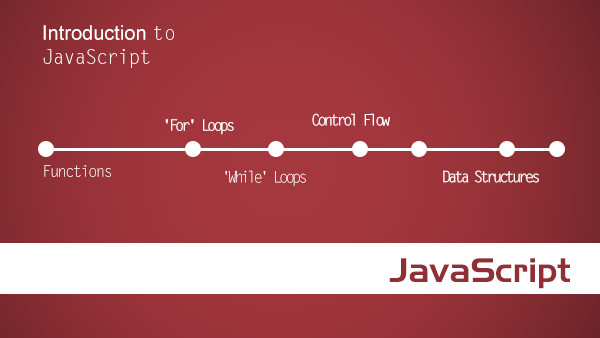TensorFlow.js 是一个开源的用于开发机器学习项目的 WebGL-accelerated javascript 库。TensorFlow.js 可以为你提供高性能的、易于使用的机器学习构建模块,允许你在浏览器上训练模型,或以推断模式运行预训练的模型。TensorFlow.js 不仅可以提供低级的机器学习构建模块,还可以提供高级的类似 Keras 的 API 来构建神经网络。
一、张量:tensors
tensor 是 TensorFlow.js 的数据中心单元:由一组数值组成的一维或多维数组。Tensor 实例的 shape 属性定义了这个数组的形状(例如:数组的每个维度有多少个值)。
最主要的 Tensor 构造函数是 tf.tensor 函数
// 2x3 Tensorconst shape = [2, 3]; // 可以看做是两行三列组成const a = tf.tensor([1.0, 2.0, 3.0, 10.0, 20.0, 30.0], shape); a.print(); // Output: [[1 , 2 , 3 ],// [10, 20, 30]]// The shape can also be inferred:const b = tf.tensor([[1.0, 2.0, 3.0], [10.0, 20.0, 30.0]]); b.print();// Output: [[1 , 2 , 3 ],// [10, 20, 30]]
但是,在构建低阶张量时,为了提高代码的可读性,我们推荐使用下列的函数:
// 0阶张量,即标量tf.scalar(3.14).print(); // 3.140000104904175, 默认dtype 是 float32tf.scalar(3.14, 'float32').print(); // 3.140000104904175tf.scalar(3.14, 'int32').print(); // 3tf.scalar(3.14, 'bool').print(); // 1// 1阶张量tf.tensor1d([1, 2, 3]).print(); // [1, 2, 3]// 2阶张量// Pass a nested array.tf.tensor2d([[1, 2], [3, 4]]).print();// Pass a flat array and specify a shape.tf.tensor2d([1, 2, 3, 4], [2, 2]).print();// ouput// [[1, 2],// [3, 4]]// 3阶张量// Pass a nested array.tf.tensor3d([[[1], [2]], [[3], [4]]]).print();// Pass a flat array and specify a shape.tf.tensor3d([1, 2, 3, 4], [2, 2, 1]).print();// output// [[[1],// [2]],// [[3],// [4]]]// 4阶张量// Pass a nested array.tf.tensor4d([[[[1], [2]], [[3], [4]]]]).print();// Pass a flat array and specify a shape.tf.tensor4d([1, 2, 3, 4], [1, 2, 2, 1]).print();// output// [[[[1],// [2]],// [[3],// [4]]]]
上述 5个低阶张量的表示方法,除了 scalar 和 tensor1d 两方法没有 shape 属性外,其它的都会传入values、shape、dtype 三个参数,注意有无 shape 传入时,values 的表示方式。
TensorFlow.js 也提供了把 Tensor 实例中的所有元素的值重置为 0 和 1 方法:
// 3x5 Tensor with all values set to 0const zeros = tf.zeros([3, 5]);// Output: [[0, 0, 0, 0, 0],// [0, 0, 0, 0, 0],// [0, 0, 0, 0, 0]]// 2X2 Tensor with all values set to 1tf.ones([2, 2]).print(); // output // [[1, 1],// [1, 1]]
在 TensorFlow.js 中,张量值是不可改变的;一旦创建,你就不能改变它的值。相反,如果你执行 operations(ops) 操作,就可以生成新的张量值。
二、变量:variables
variables 是用一个张量值初始化的。不像张量(tensor),值不可改变。你可以使用 assign 方法给一个存在的变量(variable)分配一个新的张量:
const initialValues = tf.zeros([5]);const biases = tf.variable(initialValues); // 初始化偏差(距离原点的截距或偏移)biases.print(); // output: [0, 0, 0, 0, 0]const updatedValues = tf.tensor1d([0, 1, 0, 1, 0]); biases.assign(updatedValues); // update values of biasesbiases.print(); // output: [0, 1, 0, 1, 0]
变量(variable)主要是用于在模型训练时,进行数据的保存和更新。
三、操作:operations(ops)
tensors 可以用保存数据,而 operations 可以操作数据。TensorFlow.js 提供了多种适用于张量的线性代数和机器学习的运算的 operations。由于张量是不可改变的,所以 operations 操作并不会改变 tensors 的值,而是返回新的张量。
1、operations 提供了类似 square 等一元运算:
const x = tf.tensor1d([1, 2, Math.sqrt(2), -1]); x.square().print(); // or tf.square(x)// [1, 4, 1.9999999, 1]const x = tf.tensor1d([1, 2, 4, -1]); x.sqrt().print(); // or tf.sqrt(x)// [1, 1.4142135, 2, NaN]
2、operations 提供了类似 add、sub 等二元运算:
const a = tf.tensor1d([1, 2, 3, 4]);const b = tf.tensor1d([10, 20, 30, 40]); a.add(b).print(); // or tf.add(a, b)// [11, 22, 33, 44]
3、支持链式操作:
const e = tf.tensor2d([[1.0, 2.0], [3.0, 4.0]]);const f = tf.tensor2d([[5.0, 6.0], [7.0, 8.0]])const sq_sum = e.add(f).square(); sq_sum.print();// Output: [[36 , 64 ],// [100, 144]]// 所有的操作都暴露在函数的命名空间中,也可以进行下面操作,得到相同的结果const sq_sum = tf.square(tf.add(e, f));
四、模型和层
从概念上看,一个模型就是一个函数,给定相应输入得到期望的输出。
在 TensorFlow.js 中,有两种创建模型的方式:
1、通过使用 ops 直接创建模型
// Define functionfunction predict(input) { // y = a * x ^ 2 + b * x + c
return tf.tidy(() => { const x = tf.scalar(input); const ax2 = a.mul(x.square()); const bx = b.mul(x); const y = ax2.add(bx).add(c); return y;
});
}// Define constants: y = 2x^2 + 4x + 8const a = tf.scalar(2);const b = tf.scalar(4);const c = tf.scalar(8);// Predict output for input of 2const result = predict(2);
result.print() // Output: 24这是一个二元方程式求解的表示法。
2、也可以使用高级 API tf.model 来构建以层定义的模型,这在深度学习中是一种常用的抽象形式
下面简单的线性回归的定义为例:
const model = tf.sequential();
model.add(
tf.layers.simpleRNN({
units: 20,
recurrentInitializer: 'GlorotNormal',
inputShape: [80, 4]
})
);const optimizer = tf.train.sgd(LEARNING_RATE);
model.compile({optimizer, loss: 'categoricalCrossentropy'});
model.fit({x: data, y: labels)});上述例子中通过创建一个线性回归模型,调用 simpleRNN 层,通过 sgd 优化算法训练,得到期望效果。
在 TensorFlow.js 中有很多不同类型的层(layers)表示法,例如 tf.layers.simpleRNN, tf.layers.gru, 和tf.layers.lstm等等。
五、内存管理:dispose 和 tf.tidy
由于,tensorFlow.js 使用了 GPU 加速数学运算,在使用张量和变量时,管理 GPU 的内存是必不可少的。
TensorFlow.js 提供了 dispose 和 tf.tidy 两个函数来帮助处理内存:
1、dispose
你可以调用一个张量或变量来清除和释放它的 GPU 内存。
const x = tf.tensor2d([[0.0, 2.0], [4.0, 6.0]]);const x_squared = x.square(); x.dispose(); x_squared.dispose();
2、tf.tidy
在做大量张量操作时,使用 dispose 可能很笨重。TensorFlow.js 提供了另一个功能 tf.tidy,它在 JavaScript 中扮演着类似的角色,除了 gpu 支持的张量。
tf.tidy 会执行一个功能,清除任何创建的中间张量,释放它们的 GPU 内存。但它不会清除内部函数的返回值。
// tf.tidy takes a function to tidy up afterconst average = tf.tidy(() => {// tf.tidy 会清除在这个函数内的张量使用的所有GPU内存,而不是返回的张量。// 即使在像下面这样的一个简短的操作序列中,也会创建一些中间的张量。所以,把 ops 放在 tidy 函数中是一个好的选择
const y = tf.tensor1d([1.0, 2.0, 3.0, 4.0]); const z = tf.ones([4]); return y.sub(z).square().mean();
});
average.print() // Output: 3.5使用 tf.tidy 将有助于防止应用程序中的内存泄漏。当内存被回收时,它也可以用来更小心地控制。
3、两个注意点
传递给 tf.tidy 函数是同步的,不会返回一个 Promise 对象。建议保留更新UI的代码,或者在tf.tidy之外发出远程请求。
tf.tidy 不会清理变量。变量通常贯穿于机器学习模型的整个生命周期中,在 TensorFlow.js 中,即使是在 tf.tidy 里创建,js也不会清理它们;但是,你可以手动调用 dispose。
六、补充
类似还有Environment、Constraints、Initializers、Regularizers.
作者:贵在随心
链接:https://www.jianshu.com/p/d9ab35b56ab8

 随时随地看视频
随时随地看视频



